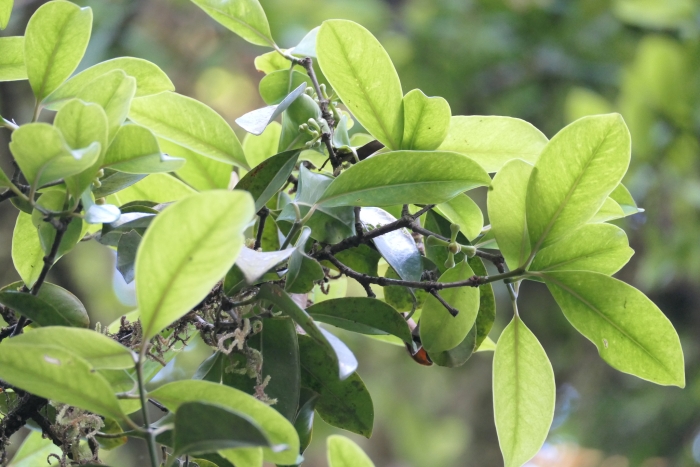Malabar Tamarind
(Garcinia gummi-gutta)
Malabar Tamarind (Garcinia gummi-gutta)
/
/

© Dinesh Valke
CC BY-SA 4.0
Image By:
© Dinesh Valke
Recorded By:
Copyright:
CC BY-SA 4.0
Copyright Notice:
Photo by: © Dinesh Valke | License Type: CC BY-SA 4.0 | License URL: http://creativecommons.org/licenses/by-sa/4.0/ | Uploader: dineshvalke | Publisher: iNaturalist |

























Estimated Native Range
Summary
Garcinia gummi-gutta, commonly known as Malabar tamarind, is a tropical evergreen fruit tree native to the moist forests of the Western Ghats in India and Sri Lanka, as well as other parts of Southeast Asia. It can grow up to 60 feet in height and has a dense canopy. The tree is particularly noted for its glossy green leaves and yellow, pumpkin-shaped fruits which mature to a deep reddish color. The fruiting season varies depending on the region but typically occurs during the rainy season. The flowers are small and unremarkable, with male and female flowers on separate trees (dioecious). Malabar tamarind is valued for its fruit, which contains hydroxycitric acid, believed to aid in weight loss.
In cultivation, Malabar tamarind is grown for its edible fruit, which is used in culinary dishes, especially in South Indian cuisine, and is a staple in traditional medicine. The tree is also planted as an ornamental due to its dense foliage and attractive fruit. It thrives in humid, tropical climates and requires well-drained soil with consistent moisture. It is not tolerant of frost and prefers full sun to partial shade. While generally pest-resistant, it can suffer from root rot if overwatered or planted in poorly drained soils. There are no widely recognized cultivars in the horticultural trade, as the tree is primarily grown from seed.CC BY-SA 4.0
In cultivation, Malabar tamarind is grown for its edible fruit, which is used in culinary dishes, especially in South Indian cuisine, and is a staple in traditional medicine. The tree is also planted as an ornamental due to its dense foliage and attractive fruit. It thrives in humid, tropical climates and requires well-drained soil with consistent moisture. It is not tolerant of frost and prefers full sun to partial shade. While generally pest-resistant, it can suffer from root rot if overwatered or planted in poorly drained soils. There are no widely recognized cultivars in the horticultural trade, as the tree is primarily grown from seed.CC BY-SA 4.0
Plant Description
- Plant Type: Tree
- Height: 20-60 feet
- Width: 20-50 feet
- Growth Rate: Slow
- Flower Color: Pink
- Flowering Season: Summer
- Leaf Retention: Evergreen
Growth Requirements
- Sun: Full Sun, Part Shade
- Water: Medium
- Drainage: Medium, Fast
Common Uses
Edible*Disclaimer: Easyscape's listed plant edibility is for informational use. Always verify the safety and proper identification of any plant before consumption., Low Maintenance
Natural Habitat
Native to moist forests of the Western Ghats in India and Sri Lanka, as well as other parts of Southeast Asia
Other Names
Common Names: Kudam Puli, Brindleberry
Scientific Names: , Garcinia gummi-gutta, Cambogia gemmi-gutta, Cambogia gummi-gutta, Cambogia gutta, Cambogia solitaria, Garcinia affinis, Garcinia cambogia, Garcinia gummi-gutta, Garcinia gutta
GBIF Accepted Name: